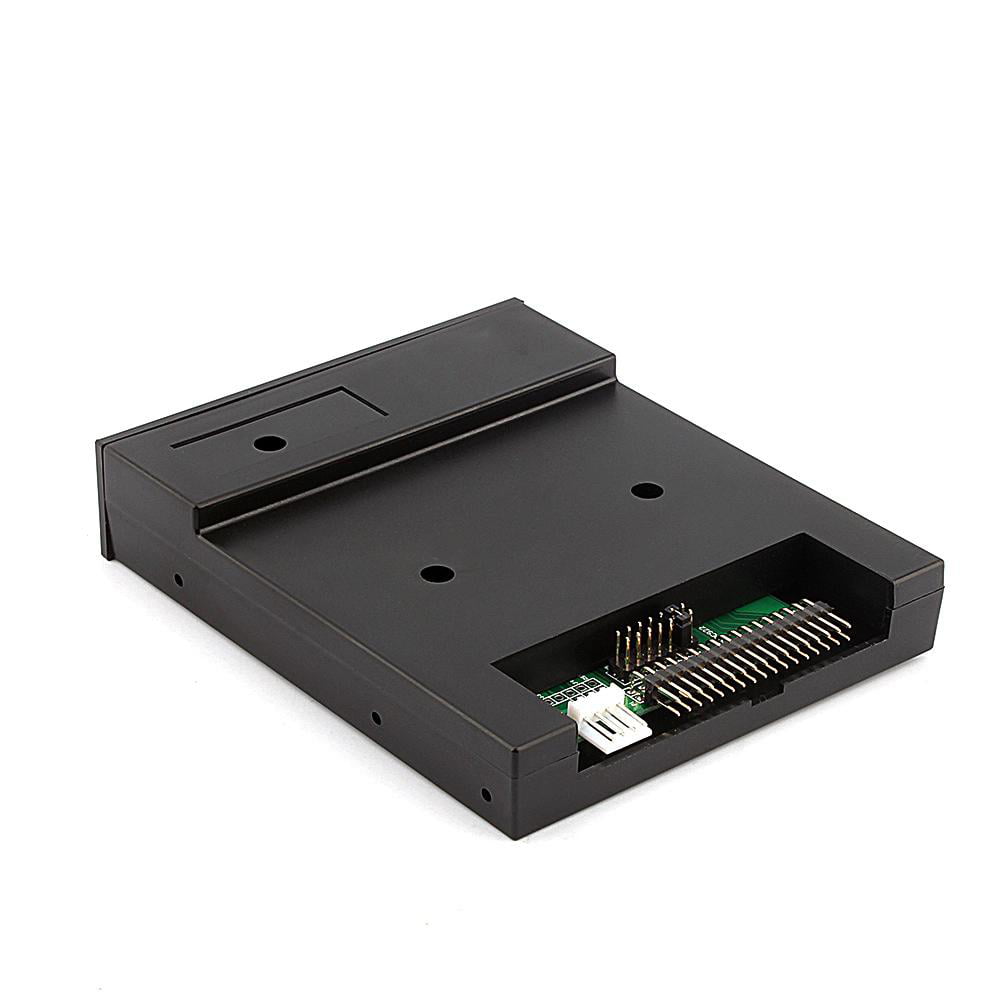

Areas of the disk unusable for storage due to flaws can be locked (marked as "bad sectors") so that the operating system does not attempt to use them. Apple eventually reverted to constant angular velocity on HD floppy disks with their later machines, still unique to Apple as they supported the older variable-speed formats.ĭisk formatting is usually done by a utility program supplied by the computer OS manufacturer generally, it sets up a file storage directory system on the disk, and initializes its sectors and tracks.
#Floppy disk emulator 5.25 mac#
This higher capacity came with a disadvantage: the format used a unique drive mechanism and control circuitry, meaning that Mac disks could not be read on other computers. Apple implemented this in early Macintosh computers by spinning the disk slower when the head was at the edge, while maintaining the data rate, allowing 400 kB of storage per side and an extra 160 kB on a double-sided disk. A more space-efficient technique would be to increase the number of sectors per track toward the outer edge of the disk, from 18 to 30 for instance, thereby keeping constant the amount of physical disk space used for storing each sector an example is zone bit recording. This was not the most efficient way to use the disk surface with available drive electronics because the sectors have constant angular size, the 512 bytes in each sector are compressed more near the disk's center.

On the IBM PC, MSX and most other microcomputer platforms, disks were written using a Constant Angular Velocity (CAV) format, with the disk spinning at a constant speed and the sectors hold the same amount of information on each track regardless of radial location. For example, Microsoft applications were often distributed on 3 1⁄ 2-inch 1.68 MB DMF disks formatted with 21 sectors instead of 18 they could still be recognized by a standard controller. Some disk controllers can vary these parameters at the user's request, increasing storage on the disk, although they may not be able to be read on machines with other controllers. For example, the HD format of 3 1⁄ 2-inch floppy disks uses 512 bytes per sector, 18 sectors per track, 80 tracks per side and two sides, for a total of 1,474,560 bytes per disk.

Other formats may get more or less capacity from the same drives and disks.ĭata is generally written to floppy disks in sectors (angular blocks) and tracks (concentric rings at a constant radius). Marketed Capacity is the capacity, typically unformatted, by the original media OEM vendor or in the case of IBM media, the first OEM thereafter.

For 5 1⁄ 4- and 3 1⁄ 2-inch capacities quoted are from subsystem or system vendor statements.Spare, hidden and otherwise reserved sectors are included in this number. For 8-inch see Table of 8-inch floppy formats IBM 8-inch formats.Historical sequence of floppy disk formats Disk formatġ13.75 KB (256 byte sectors, 13 sectors/track, 35 tracks)ĩ0 KB (128 byte sectors, 18 sectors/track, 40 tracks)ġ40 KB (256 byte sectors, 16 sectors/track, 35 tracks)ġ27 KB (128 byte sectors, 26 sectors/track, 40 tracks)ħ20 KB (400 SS, 800 DS on Macintosh, 880 DS on Amiga)Ībbreviations: SD = Single Density DD = Double Density QD = Quad Density HD = High Density ED = Extended Density LS = Laser Servo HiFD = High capacity Floppy Disk SS = Single Sided DS = Double Sidedįormatted Storage Capacity is total size of all sectors on the disk: Formatted capacities are generally set in terms of kilobytes and megabytes. The ANSI specification of 3 1⁄ 2-inch disks is entitled in part "90 mm (3.5 in)" though 90 mm is closer to 3.54 inches. Floppy disk size is often referred to in inches, even in countries using metric and though the size is defined in metric.


 0 kommentar(er)
0 kommentar(er)
